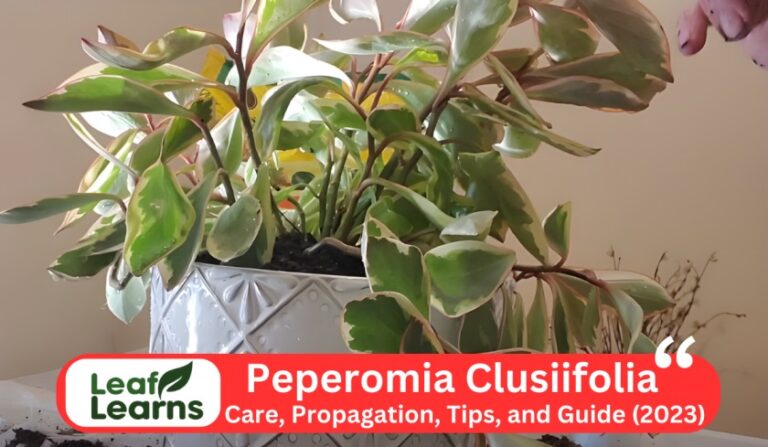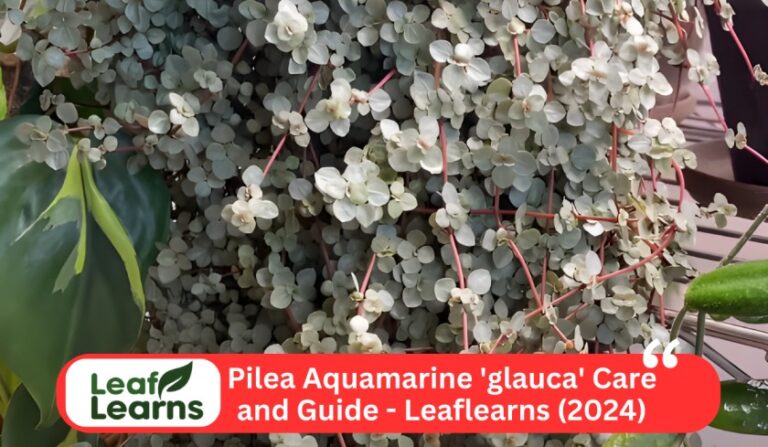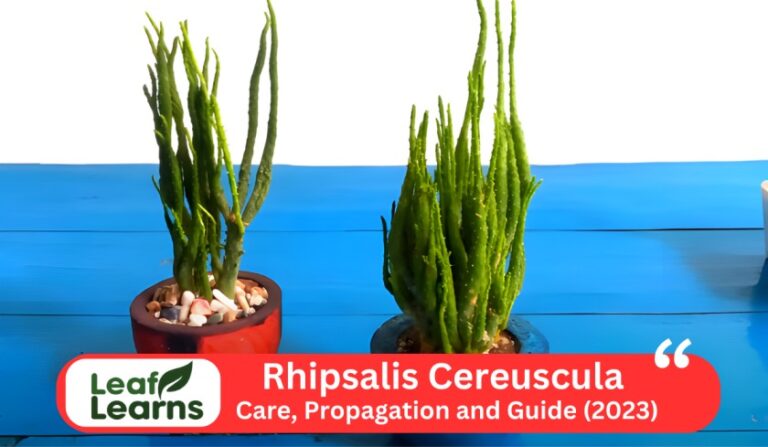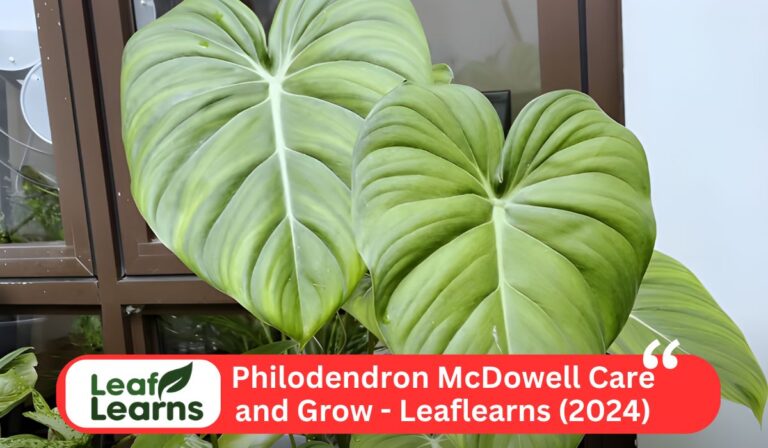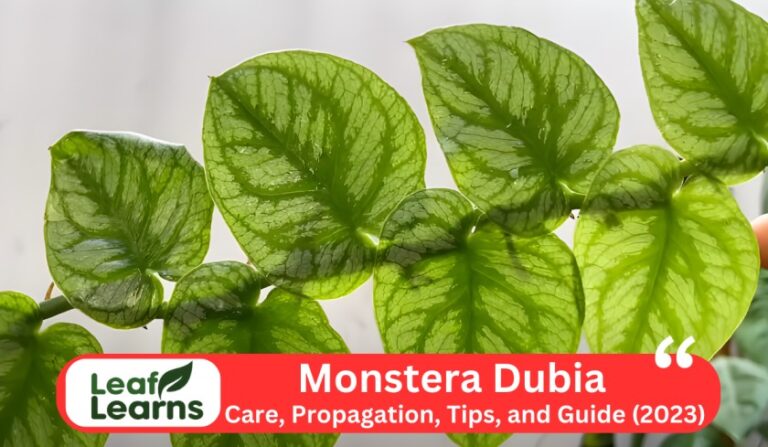Sedum Dasyphyllum | Corsican stonecrop Care and Grow (2023)
Sedum dasyphyllum, also known as Corsican Stonecrop, is a wonderful succulent that grows well in hot and dry environments, making it a unique choice for gardens where other plants struggle to survive. This resilient ground cover plant has hefty, blue-green leaves that not only endure freezing temperatures but also spread to form a lovely carpet.
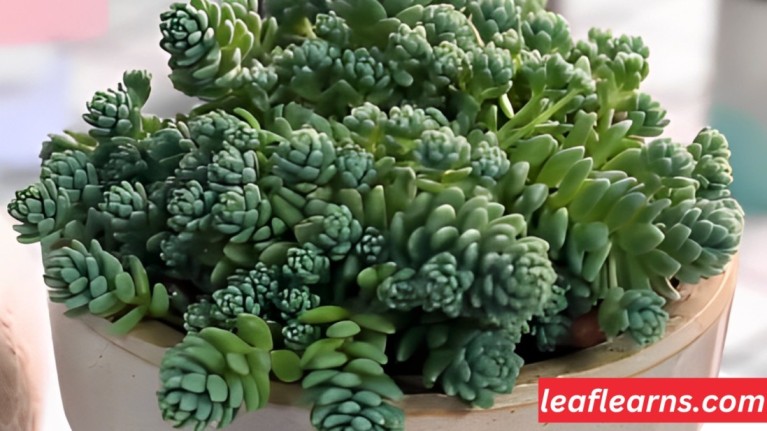
When contained, it transforms into a delicate spiller that elegantly cascades over the sides. Corsican Stonecrop undergoes a remarkable transition in the summer, when its little white flowers bloom and its leaves get a gorgeous tint of pink.
This adaptable plant has evolved to a variety of European ecosystems, demonstrating how adaptable it is in many contexts. Corsican Stonecrop, also known as Blue Tears Sedum, adds colour and personality to any outdoor space and is a hardy and attractive perennial that may be found growing amid rocks in the Mediterranean or in the cracks of dry walls.
| Common name | Corsican stonecrop |
| Scientific Name | Sedum dasyphyllum |
| Family | Crassulaceae |
| Distribution | Mediterranean region, Europe |
| Plant type | Perennial Succulent |
| Mature Height | 2-4 inches (5-10 cm) in height |
| Growth rate | Fast |
| Flower colour | Yellow, star-shaped |
| Blooming season | Late spring to early summer |
| Uses | Ground cover, rock gardens, container gardens |
| Propagations | Stem cuttings, leaf cuttings, division |
| Light requirement | Full sun to partial shade |
| Soil requirement | Well-draining, sandy, or gravelly soill |
| Watering Need | Low water requirements; drought-tolerant |
| Soil pH | Pest and disease resistant, but susceptible to rot in overly wet conditions |
| Pest and Disease | Pest and disease resistant, but susceptible to rot in overly wet conditions |
| Attracts | Butterfly |
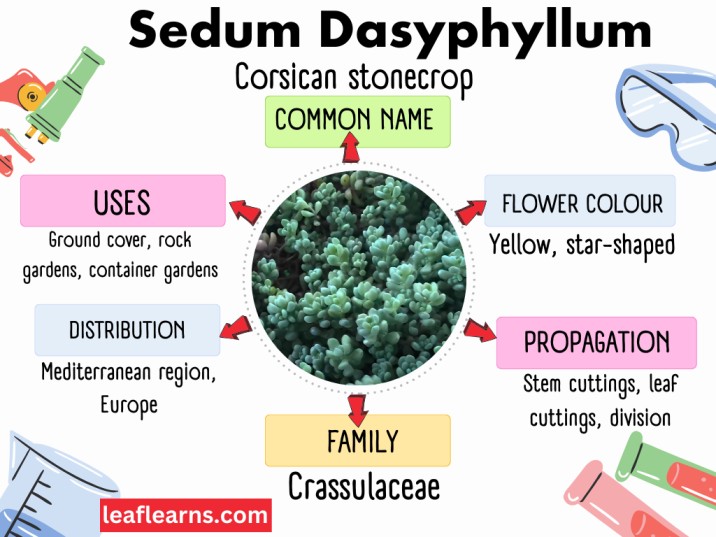
Contents
- 1 Sedum Dasyphyllum Care
- 2 Care Tips
- 3 Flowering And Fragrance
- 4 Grooming And Maintenance
- 5 Pruning
- 6 Varieties
- 7 Sedum dasyphyllum Propagation
- 8 Seed
- 9 Repotting
- 10 Overwintering
- 11 How To Propagate Blue Tears Sedum
- 12 Common Problems
- 13 Toxicity
- 14 Pests
- 15 Disease
- 16 Suggested Uses
- 17 Exploring the Diverse Varieties of Sedum Dasyphyllum
- 18 Essential Tips for Pruning and Maintaining Sedum Plants
- 19 Conclusion
- 20 FAQs
Sedum Dasyphyllum Care
Light & Temperature
The Corsican stonecrop thrives in conditions that balance temperature and light. This hardy succulent is appropriate for a variety of indoor and outdoor settings since it enjoys bright, indirect sunshine but can take some direct sun exposure.
It prefers a mild environment, with optimal temperatures falling between 60 and 75 degrees Fahrenheit (15 and 24 degrees Celsius). Avoid extremes of temperature since they might stress the plant.
You can protect the health and vitality of your plant and maximise its ability to exhibit its lovely cascading leaves by keeping the proper light and temperature conditions.
Soil & Transplanting
Corsican stonecrop is a hardy and low-maintenance succulent that may survive with little attention. This plant likes well-draining soil with adequate aeration when it comes to soil and transplanting, therefore a succulent or cactus mix is the best option.
Make sure the new container has adequate drainage holes before transplanting, and use fresh soil to give the plant the nutrients it needs. Between waterings, let the soil dry out, since overwatering can cause root rot.
This plant is a fantastic option for both novice and professional gardeners looking for an effortlessly gorgeous addition to their gardens or containers since it is very adaptable and can tolerate occasional neglect.

Humidity
This plant may thrive in a range of conditions because of its excellent tolerance for low humidity levels. It can grow in both dry and humid regions, but it must not be overwatered, especially in areas with high humidity levels. To avoid root rot, make sure the soil dries out completely in between watering.
Watering And Feeding
Proper watering and feeding are crucial aspects of Corsican stonecrop plant care to ensure its health and vitality.
This stonecrop is a succulent that does well in low-maintenance gardens and is a favorite among succulent aficionados. This hardy succulent loves to be watered using a “soak and dry” technique.
To avoid root rot, water deeply but rarely, letting the soil dry out in between applications. To encourage healthy development and vivid leaves, you may feed plant with a diluted, balanced succulent fertilizer every four to six weeks during the growing season, which is normally spring and summer.
But always keep in mind that moderation is vital, since overwatering or overfeeding can be harmful to the health of this tough plant.
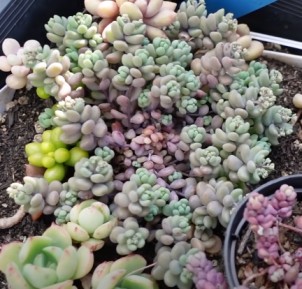
Fertilization
The Corsican Stonecrop thrives from minimum fertilization. This resilient succulent doesn’t require a lot of fertilizer because it may survive in soil that’s just moderately fertile to poor.
Use a balanced, diluted liquid fertilizer sparingly or a slow-release granular alternative to encourage healthy development, usually in the spring and early summer when plants are actively expanding. Leggy growth and a decreased ability to withstand dryness might result from overfertilization.
To ensure Corsican stonecrop maintains its compact, lively look while providing a dash of foliage and texture to your garden or rockery, choose a light hand while fertilizing it.
Size & Growth
Corsican stonecrop is a little and endearing succulent that normally grows to a compact height of 2 to 4 inches (5 to 10 cm) with a spread of up to 12 inches (30 cm).
This low-growing perennial has a dense mat of tiny, spongy leaves that resembles a thick carpet. It is the perfect ground cover option for rock gardens, containers, or as an accent in miniature landscapes due to its petite stature and ease with which it spreads and cascades.
This plant despite its little stature, can grow and prosper in a range of conditions and is prized for its fortitude and adaptability.
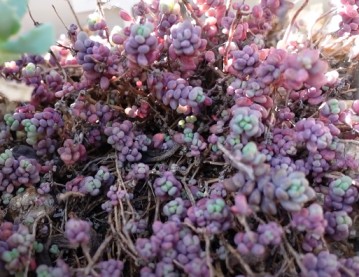
Care Tips
This plant grows well in both full sun and moderate shade. To keep its brilliant colour and compact growth habit, it needs at least 6 hours every day in direct sunlight.
- Soil: Ensure well-draining, sandy or grit-like soil to maintain the health of Corsican stonecrop and prevent wet roots.
- Watering: Water moderately, allowing the soil to dry out completely between waterings to prevent root rot; prioritize underwatering over overwatering.
- Temperature: Corsican stonecrop thrives in USDA zones 5-9, tolerating colder temperatures but requires protection from excessive cold; consider sheltering potted plants indoors in winter.
- Propagation: Easily propagate by cutting stems from mature plants and placing them in well-draining soil to grow new plants.
- Fertilizing: These plants require minimal fertilizer; apply a balanced, low-strength fertilizer during the growing season (spring and summer).
Flowering And Fragrance
It frequently steals the show with its spectacular look and low maintenance requirements, but it also delights fans with its blossoming and smell.
Corsican stonecrop is a lovely succulent that adorns gardens with its delicate elegance. It blooms in little clusters of tiny star-shaped flowers in white, pink, or pastel purple, usually in late spring or early summer.
These flowers, despite their small size, emit a light, pleasant scent that may be highly alluring to pollinators like bees and butterflies. This plant is a favourite among succulent lovers and gardeners alike because of the way its exquisite blossoms and light smell offer a magical touch to any garden.

Grooming And Maintenance
The low-maintenance succulent Corsican Stonecrop, thrives with little care and upkeep. Due to its adaptability and capacity to flourish under a variety of circumstances with little assistance, this hardy plant is a favourite among gardeners and succulent fans.
It is the perfect option for anyone looking for an effortlessly lovely addition to their gardens or interior plant collections because of its small, creeping habit, which only sometimes requires pruning to preserve its neat appearance.
This type of plant simply lends a touch of greenery and beauty to any environment without the need for continual attention thanks to its thick, dense foliage and simplicity of maintenance.
Pruning
This plant has to be pruned in order to stay compact and appealing. Trim the stems in the early spring or late winter to encourage bushier growth and avoid legginess. To promote new development and keep the plant healthy, remove any yellowing or dead leaves. This low-maintenance succulent thrives with very minor trimming.
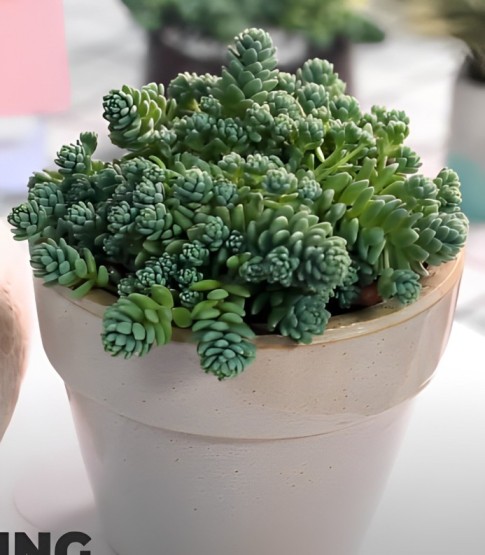
Varieties
Some notable varieties include:
Sedum-Dasyphyllum Major:In comparison to the common species, this variant is distinguished by having bigger, sturdier leaves. It grows into a thick mat of succulent leaves, forming a lovely ground cover.
Sedum-Dasyphyllum Minor: This cultivar has smaller leaves, as the name would imply, giving it a delicate and elegant appearance. It’s ideal for bringing a little bit of greenery into confined areas or rock gardens.
Sedum-Dasyphyllum Variegatum: The beautiful variegated leaves of this cultivar have creamy white or yellow margins. Any garden would benefit from the variegation’s eye-catching contrast to the surrounding flora.
Sedum-Dasyphyllum ‘Blue Tears’: This type is well known for its bluish-green foliage, which during colder weather might become purple. Succulent lovers prefer it because of its distinctive colouring.
Sedum-Dasyphyllum ‘Major Aureum’: This variety adds a splash of colour to succulent arrangements or rock gardens with its vivid, golden-yellow leaf. When exposed to direct sunlight, its colour develops.
Sedum-Dasyphyllum ‘Coppertone’: ‘Coppertone’ has leaves with a warm coppery colour, as the name would imply. This cultivar gives succulent gardens warmth and depth.
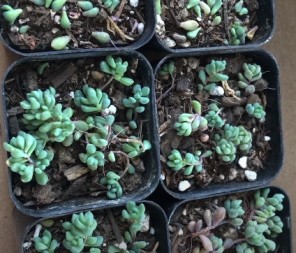
Sedum dasyphyllum Propagation
Propagating Corsican stonecrop is a simple process that can be accomplished through various methods. In this article, we’ll explore these propagation techniques in detail.
Leaf Cuttings
One of the most common methods for reproducing Sedum-dasyphyllum is by leaf cuttings. Do the following:
- Select a healthy parent plant stem, preferably one that is not in bloom.
- A couple of the leaves should be cut, twisted, or gently twisted off the stem.
- Allow the cuttings to air dry for one or two days. This procedure prevents rotting when planting.
- In a succulent soil combination that drains well, the dried leaf cuttings should be buried about half an inch deep.
- After lightly watering the cuttings to help the soil settle, keep the soil damp but not drenched.
- Place the cuttings in a spot with bright but indirect light, staying out of the direct sun.
- In a few weeks to a couple of months, the cuttings should develop roots and small rosettes, signifying successful propagation.
Offsets
Around the base of the parent plant of Sedum-dasyphyllum, offsets, sometimes called “pups” or “babies,” are produced spontaneously. Another simple method for growing the plant is as follows:
When the offsets are big enough to handle, gently take them from the parent plant. Make sure that each offset has a few roots.
Plant these offsets at the same depth as the parent plant, either in a succulent mix or straight in the garden.
Maintain the same standard of care by giving your plants enough hydration and bright, indirect light.
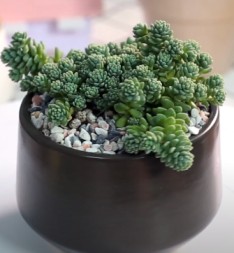
Stem Cuttings
Stem cuttings can also be used to grow Corsican stonecrop in addition to leaf cuttings and offsets:
- Make sure the stem you cut is a few inches long and healthy from the parent plant.
- Give the cut end a day or two to callus.
- With a gentle watering, plant the stem cutting in a soil mixture that drains well.
- Put the cutting in a spot with good indirect lighting.
- The cutting will eventually take root and begin to grow.
Division
Division is a useful technique for plants that are bigger and more mature. This is usually done when a plant outgrows its container or available area:
- Remove the plant with care from the ground or its container.
- Make sure that the plant is carefully divided into tiny pieces, and that each piece contains some roots.
- Replant the separated areas in the desired locations, using the necessary precautions.
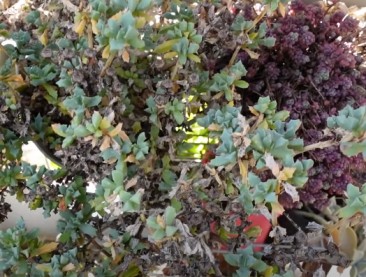
Softwood Stem Cuttings
You may grow this plant a hardy succulent, by using softwood stem cuttings. Choose strong, young stems in the late spring or early summer and cut them into segments of 2-3 inches.
Lower leaves should be removed, and the cut ends should callus for a day. Put the cuttings in a soil that drains properly and keep them just barely damp. New roots and development should appear a few weeks later, forming new plants.
Leaf Propagation
By using leaf cuttings Corsican Stonecrop, is easily propagated. To multiply, take a healthy leaf from the parent plant, carefully detach it, let it calluse for a few days, and then plant it in soil that drains well.
Up to the emergence of new roots and small rosettes, keep the soil continually wet. This succulent is a favourite among gardeners and succulent fans because to how easily its leaves can be propagated
Seed
Save the flower seeds from the previous year. Plants produced from seeds are not exact replicas of the parent plant and may have unique traits.
Two parts seedling potting mix and two parts perlite should be added to a seed tray. wet just enough.Distribute seeds uniformly throughout the soil’s surface.
Put a sheet or cover made of transparent plastic on the tray.Keep the moisture level up but don’t overwater.
Offer dazzling indirect light.A few weeks to a few months may pass before seeds begin to sprout.Once seedlings are large enough to handle, transplant them into larger pots.
Repotting
Repot in the spring once or twice a decade, or whenever the plant has outgrown its container. Pick a pot with adequate drainage that is a little bit bigger.
Overwintering
Hardy succulent Corsican stonecrop has outstanding overwintering qualities. The thick leaves of this low-growing perennial retain water and may tolerate cold when the temperature drops.
It is a well-liked option for gardeners wishing to add year-round interest to their landscapes because of its capacity to flourish in colder climes. This plant is a hardy and lovely addition to gardens since it requires little maintenance and keeps its colour throughout the winter.
How To Propagate Blue Tears Sedum
- Propagate Blue Tears Sedum in spring or early summer by taking stem cuttings.
- Use a clean, sharp knife or scissors to cut a healthy stem just below a leaf node.
- Allow the cut end to callus for a day or two.
- Plant the cutting in well-draining soil with minimal watering, and place it in indirect sunlight.
- With proper care, the Blue Tears Sedum cuttings will root and grow into new plants.
Common Problems
Corsican Stonecrop, may have a number of typical issues. Leggy growth can result from inadequate sunshine and root rot, respectively.
Infestations of pests like mealybugs and aphids can be a pain. These problems may be avoided and a healthy Sedum-dasyphyllum can be maintained with appropriate maintenance, well-draining soil, and illumination.
Toxicity
The Corsican stonecrop is often thought to be non-toxic to both people and animals. You may grow this lovely and secure succulent in your house or yard.
As with any plant, you must be cautious if you have animals that could nibble on it since too much eating could cause a slight stomach upset. In general, sedum-dasyphyllum poses little toxicity risk.
Pests
Pests seldom affect the hardy succulent Sedum Dasyphyllum. However, mealybugs, aphids, and snails might pose problems for it on occasion. These bugs may go into the plant and harm the leaves. A healthy plant may be maintained with regular inspections, natural therapies like neem oil, or by introducing helpful insects.
Disease
Hardy succulent Corsican Stonecrop is generally disease-resistant. When overwatered, it might occasionally develop fungal diseases such powdery mildew or rot.
Ensure well-draining soil and moderate watering to promote a healthy, disease-resistant plant in order to avoid these problems.
Suggested Uses
Corsican stonecrop has several adaptable applications. Because of its modest growth rate and succulent nature, it is the perfect ground cover for rockeries and gardens. Its tolerance for drought makes it a good choice for green roofs as well. It also grows well in containers, enhancing the appeal of patios and balconies.
Exploring the Diverse Varieties of Sedum Dasyphyllum
The lovely succulent Corsican Stonecrop Sedum minor, comes in a number of fascinating variants. These sedums provide a variety of hues and traits to embellish your landscape, from the delicate Sedum dasyphyllum “Silver Rose” to the bright Corsican Stonecrop “Himalayan Skies.
” Corsican Stonecrop maintenance is not too difficult. These resilient plants are an excellent addition to any rock garden since they thrive in full sun and soil that drains well. Regular watering, especially during dry seasons, is crucial for Corsican Stonecrop care in order to maintain their health.
Watch out for any overwatering indications because they might cause decay. Be careful that some kinds of Sedum-dasyphyllum may be poisonous to cats if you possess one.
Essential Tips for Pruning and Maintaining Sedum Plants
Sedum plants, like Sedum ‘Lilac Mound,’ require regular maintenance and pruning to be healthy and well-shaped. Pruning your sedum in the early spring to eliminate any dead or damaged growth can keep them flourishing.
Sedums are often low-maintenance plants, making them a great option for time-constrained gardeners. Your outdoor area may be enhanced by the natural beauty of Corsican Stonecrop variations if you take good care of them and pay attention to how much sunshine they like.
Conclusion
For a thriving Corsican Stonecrop (Sedum dasyphyllum), ensure it gets the right light, temperature, and well-draining soil. This adaptable succulent, also known as Blue Tears, adds a beautiful touch to gardens, containers, and xeriscaping.
Follow care tips to avoid common issues like overwatering, sunburn, pests, and diseases, allowing you to enjoy its beauty effortlessly.
FAQs
Is sedum Dasyphyllum Hardy?
Corsican Stonecrop spreads fast because it is incredibly resilient, cold-hardy, and drought resistant. Its small leaves break off easily and take root to create new plants.
What soil for sedum Dasyphyllum?
Conditions of the soil. Although this plant can survive in harsh sunlight and with little water, it still need good soil to develop. Clay soil, loamy soil, and sandy soil are the optimum soil types for Sedum Dasyphyllum. A well-draining potting mix that contains additional perlite or pumice in it is another option.
What is the native range of sedum Dasyphyllum?
The native range of this plant is Central & S. Europe to SW. Türkiye, NW.
Does sedum grow fast?
While fast-growing ground cover species like Sedum can spread up to 1″ each month throughout the growing season, slow kinds will stay neat and compact in a pot.
Is sedum a perennial or annual?
Yes species are annuals or tender perennials in colder regions.
Is sedum an evergreen?
Yes sedum is evergreen foliage.
What is the significance of sedum?
The way this flower blooms is where the meaning of peace, tenacity, and tranquillity comes from.
Can you grow sedum from seed?
Sedum seeds are more tiny, so be sure to start these indoors for best results.and choice the best variety.

